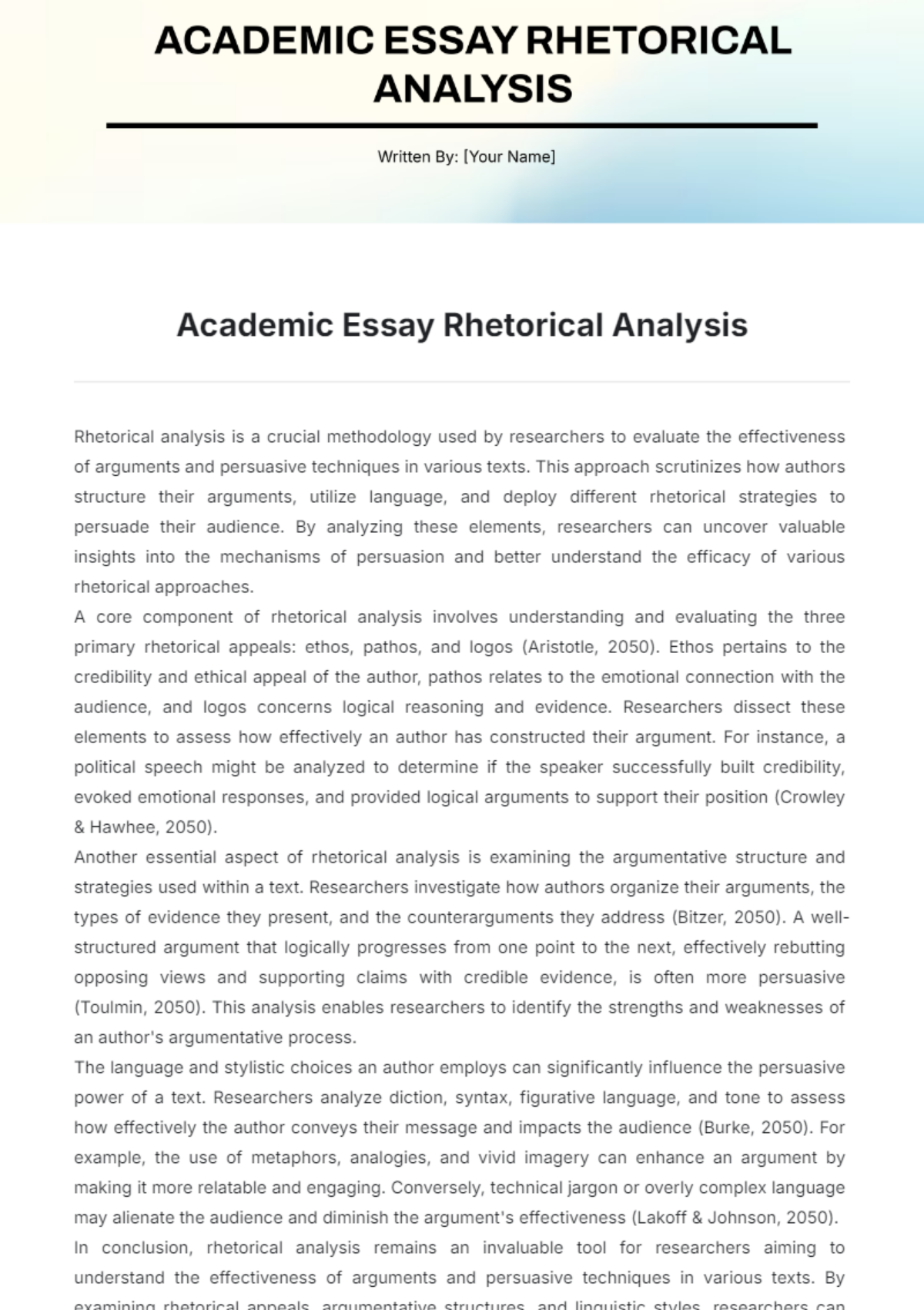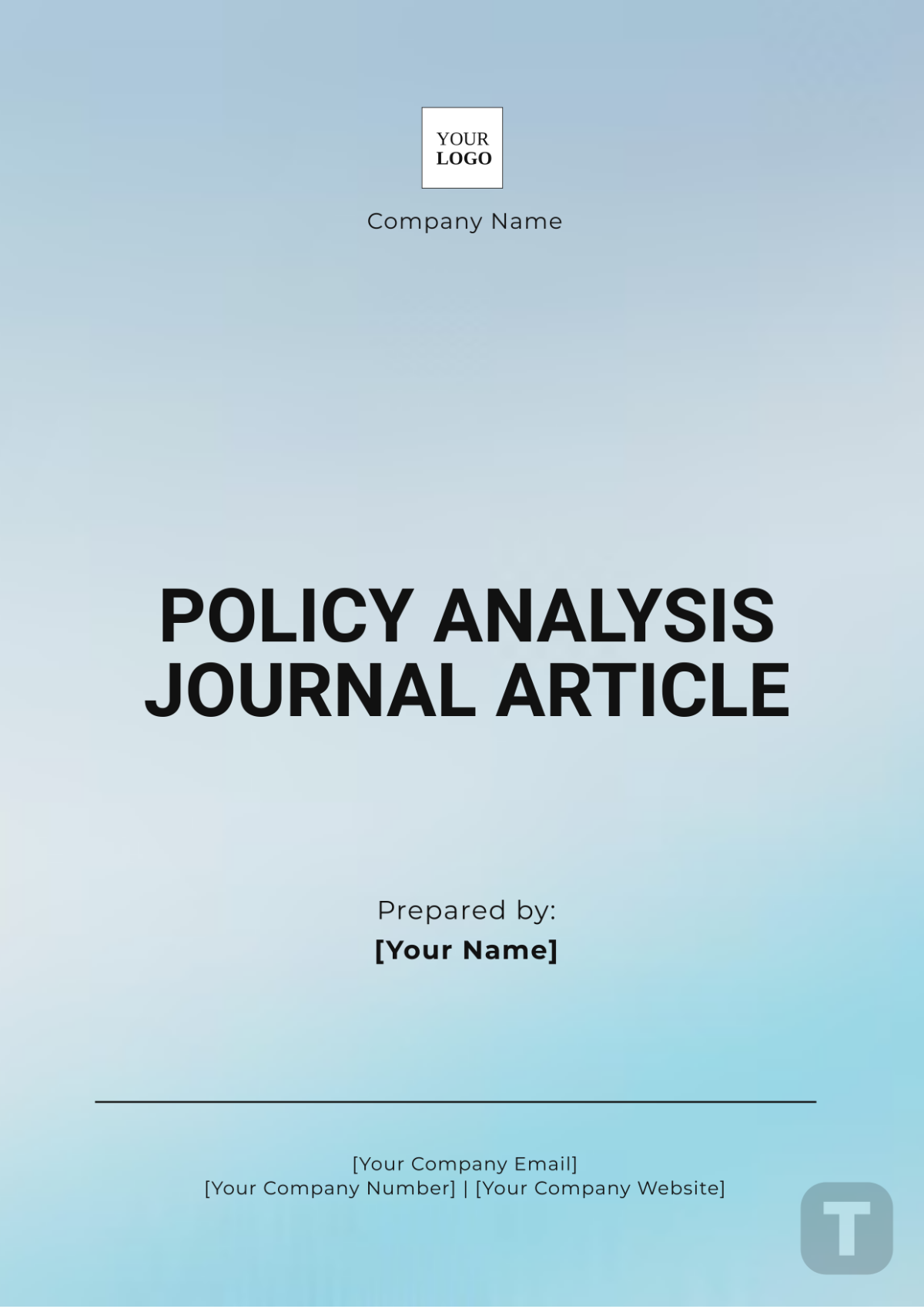Gym Performance Analysis
I. Introduction
A. Purpose
Performance Review: The purpose of this analysis is to evaluate the overall performance of [Your Company Name]. A thorough performance review helps in identifying strengths and areas for improvement.
Strategic Planning: It aims to provide insights for strategic planning and decision-making. Detailed analysis supports informed decisions and effective planning for future growth.
B. Scope
Comprehensive Coverage: This analysis covers various aspects of gym performance, including financials, membership, and operational efficiency. Comprehensive coverage ensures a holistic understanding of the gym's performance.
Period of Analysis: The period of analysis includes the last fiscal year. Specifying the period helps in focusing the analysis on relevant data and trends.
C. Methodology
Data Collection: Data was collected from various sources, including financial records, membership databases, and staff reports. Accurate data collection is crucial for reliable analysis.
Analytical Tools: Various analytical tools and techniques were used to evaluate the data. The use of appropriate tools ensures precise and meaningful insights.
II. Financial Performance
A. Revenue Analysis
The following chart and table outline the revenue generated from different sources over the last fiscal year:
No. | Revenue Source | Amount |
|---|---|---|
1 | Membership Fees | $500,000 |
2 | Personal Training | $200,000 |
3 | Merchandise Sales | $50,000 |
4 | Group Classes | $100,000 |
5 | Other Services | $150,000 |
Total | $1,000,000 |
Membership Fees: Membership fees contributed $500,000, indicating a stable member base. This consistent revenue stream is essential for financial stability and planning.
Personal Training: Personal training generated $200,000, reflecting the popularity and demand for personalized fitness services. This highlights the importance of investing in skilled trainers and personalized programs.
Merchandise Sales: Merchandise sales accounted for $50,000, showcasing a potential area for growth. Expanding merchandise offerings could increase revenue and enhance brand visibility.
Group Classes: Group classes brought in $100,000, demonstrating their popularity among members. Offering a variety of engaging classes can attract new members and retain existing ones.
Other Services: Other services, including spa and nutrition consultations, contributed $150,000. Diversifying services helps in catering to a broader audience and boosting overall revenue.
B. Expense Analysis
The following table presents the expenses over the previous fiscal year:
No. | Expense Category | Amount |
|---|---|---|
1 | Operational Costs | $250,000 |
2 | Staff Salaries | $200,000 |
3 | Marketing Expenses | $50,000 |
4 | Equipment Purchase and Maintenance | $100,000 |
Total | $600,000 |
Operational Costs: Operational costs totaled $250,000, including rent, utilities, and maintenance. Managing these costs efficiently is crucial for profitability.
Staff Salaries: Staff salaries amounted to $200,000, reflecting the investment in qualified personnel. Competitive salaries are essential for retaining skilled staff and maintaining service quality.
Marketing Expenses: Marketing expenses were $50,000, highlighting the efforts to attract and retain members. Effective marketing strategies are key to driving membership growth.
Equipment Purchase and Maintenance: Equipment expenses, including purchase and maintenance, were $100,000. Regular investment in high-quality equipment ensures member satisfaction and safety.
C. Profitability
Gross Profit: The gym's gross profit was $400,000, calculated by subtracting total expenses from total revenue. A healthy gross profit indicates strong financial performance and the potential for growth.
Net Profit: After accounting for taxes and other deductions, the net profit was $300,000. This positive net profit reflects efficient cost management and a successful revenue generation strategy.
III. Membership Analysis
A. Membership Growth
The following table showcases the membership growth over the last fiscal year.
No. | Month | New Members | Total Members |
|---|---|---|---|
1 | January | 50 | 500 |
2 | February | 45 | 545 |
3 | March | 60 | 605 |
4 | April | 55 | 660 |
5 | May | 70 | 730 |
6 | June | 65 | 795 |
7 | July | 80 | 875 |
8 | August | 75 | 950 |
9 | September | 90 | 1040 |
10 | October | 85 | 1125 |
11 | November | 100 | 1225 |
12 | December | 95 | 1320 |
Total | 870 | 1320 |
Monthly Growth: The gym experienced steady monthly growth in membership, with an average of 72.5 new members per month. This consistent growth indicates effective marketing and member retention strategies.
Peak Months: July and November were peak months, with 80 and 100 new members, respectively. Identifying peak months can help in planning targeted promotions and events to maximize membership growth.
Overall Increase: The total membership increased by 820 members, showcasing the gym's ability to attract and retain new members. A growing membership base enhances revenue potential and community engagement.
B. Membership Retention
Retention Rate: The retention rate was 85%, indicating a high level of member satisfaction. A strong retention rate is essential for sustained revenue and a positive gym culture.
Member Feedback: Regular feedback surveys revealed high satisfaction with facilities, staff, and programs. Positive feedback highlights areas of strength and opportunities for further enhancement.
Loyalty Programs: Loyalty programs and incentives contributed to the high retention rate. Effective loyalty programs encourage members to stay engaged and committed to their fitness goals.
IV. Operational Efficiency
A. Staff Performance
The following table outlines the performance metrics for staff over the last fiscal year:
No. | Metric | Target | Actual |
|---|---|---|---|
1 | Member Satisfaction | 90% | 92% |
2 | Class Attendance | 85% | 88% |
3 | Personal Training Sessions | 1,200 sessions | 1,250 sessions |
4 | New Memberships Generated | 800 | 870 |
5 | Staff Turnover Rate | <10% | 8% |
Member Satisfaction: The actual member satisfaction rate was 92%, exceeding the target of 90%. This high satisfaction rate reflects the dedication of the staff and the quality of services provided.
Class Attendance: Class attendance was 88%, surpassing the target of 85%. High class attendance indicates that the classes offered are engaging and meet member needs.
Personal Training Sessions: The gym conducted 1,250 personal training sessions, exceeding the target of 1,200. This achievement highlights the demand for personalized fitness programs and the effectiveness of the trainers.
New Memberships Generated: The staff generated 870 new memberships, surpassing the target of 800. This success demonstrates effective sales and marketing efforts by the team.
Staff Turnover Rate: The staff turnover rate was 8%, below the target of 10%. A low turnover rate indicates a positive work environment and effective staff retention strategies.
B. Equipment Utilization
Usage Rate: The average equipment usage rate was 75%, indicating efficient utilization. High usage rates reflect the popularity of the equipment and the gym's ability to meet member needs.
Maintenance Schedule: Regular maintenance schedules ensured minimal downtime and high equipment availability. Effective maintenance is crucial for member satisfaction and safety.
New Equipment: Investment in new equipment led to increased member satisfaction and engagement. Regularly updating equipment helps in attracting new members and retaining existing ones.
V. Program Effectiveness
A. Group Classes
The following chart and table present the attendance and satisfaction rates for various group classes:
No. | Class Type | Attendance | Satisfaction |
|---|---|---|---|
1 | Yoga | 85% | 90% |
2 | HIIT | 80% | 88% |
3 | Pilates | 78% | 85% |
4 | Spin | 82% | 87% |
5 | Zumba | 88% | 92% |
Yoga: Yoga classes had an attendance rate of 85% and a satisfaction rate of 90%. These high rates indicate that yoga is a popular and well-received program, contributing significantly to member engagement.
HIIT: HIIT classes had an attendance rate of 80% and a satisfaction rate of 88%. The effectiveness of HIIT classes highlights the demand for high-intensity workouts among members.
Pilates: Pilates classes had an attendance rate of 78% and a satisfaction rate of 85%. While slightly lower, these rates still reflect strong engagement and satisfaction with the Pilates program.
Spin: Spin classes had an attendance rate of 82% and a satisfaction rate of 87%. The popularity of spin classes indicates their effectiveness in providing engaging and enjoyable workouts.
Zumba: Zumba classes had the highest attendance rate at 88% and a satisfaction rate of 92%. These exceptional rates demonstrate the success of Zumba in attracting and retaining members.
B. Personal Training
Client Satisfaction: Client satisfaction with personal training was 95%, reflecting the effectiveness and personalized approach of the trainers. High satisfaction rates indicate successful client-trainer relationships and positive outcomes.
Training Goals: 90% of clients achieved their training goals, showcasing the success of personalized fitness programs. Achieving training goals enhances client satisfaction and loyalty.
Referral Rate: 70% of personal training clients referred new members, highlighting the positive impact of personal training on member acquisition. High referral rates indicate strong client satisfaction and trust.
VI. Member Engagement
A. Events and Workshops
The following table outlines the participation and satisfaction rates for various events and workshops:
No. | Event/Workshop | Participation | Satisfaction |
|---|---|---|---|
1 | Nutrition Workshop | 75% | 85% |
2 | Fitness Challenges | 80% | 88% |
3 | Wellness Seminars | 70% | 83% |
4 | Community Events | 82% | 90% |
5 | Member Socials | 78% | 87% |
Nutrition Workshop: The nutrition workshop had a participation rate of 75% and a satisfaction rate of 85%. These rates indicate that the workshop successfully engaged members and provided valuable information.
Fitness Challenges: Fitness challenges had a participation rate of 80% and a satisfaction rate of 88%. The popularity of these challenges highlights their effectiveness in motivating members and promoting a healthy lifestyle.
Wellness Seminars: Wellness seminars had a participation rate of 70% and a satisfaction rate of 83%. While slightly lower, these rates still reflect meaningful engagement and satisfaction with the seminars.
Community Events: Community events had a participation rate of 82% and a satisfaction rate of 90%. These high rates demonstrate the success of community events in fostering a sense of belonging and engagement among members.
Member Socials: Member socials had a participation rate of 78% and a satisfaction rate of 87%. The positive reception of these socials highlights their importance in building a supportive and connected gym community.
B. Member Feedback
Surveys: Regular surveys collected feedback on various aspects of the gym experience. Surveys provide valuable insights into member satisfaction and areas for improvement.
Focus Groups: Focus groups offered detailed feedback on specific programs and services. In-depth discussions in focus groups help in identifying and addressing member needs effectively.
Suggestion Box: A suggestion box allowed members to share ideas and concerns anonymously. Anonymity encourages honest feedback and innovative ideas for enhancing the gym experience.
VII. Competitive Analysis
A. Market Position
The following chart and table highlight the market position of [Your Company Name] compared to competitors:
No. | Competitor | Market Share | Key Strengths |
|---|---|---|---|
1 | Fit Life | 25% | Advanced Facilities |
2 | Health Hub | 20% | Affordable Pricing |
3 | Elite Wellness | 15% | Specialized Programs |
4 | Fit Club | 10% | Strong Community |
5 | [Your Company Name] | 30% | Comprehensive Services |
Fit Life: Fit Life holds a 25% market share, with advanced facilities as their key strength. Investing in state-of-the-art facilities can attract members seeking the latest fitness technology.
Health Hub: Health Hub captures 20% of the market with affordable pricing. Competitive pricing strategies can appeal to cost-conscious members and increase market share.
Elite Wellness: Elite Wellness has a 15% market share, known for specialized programs. Offering unique and specialized programs can differentiate [Your Company Name] and attract niche markets.
Fit Club: Fit Club holds a 10% market share, with a strong community focus. Building a strong community can enhance member loyalty and engagement.
[Your Company Name]: [Your Company Name] leads with a 30% market share, offering comprehensive services. Maintaining a diverse range of services can sustain market leadership and attract a broad member base.
B. SWOT Analysis
Strengths: [Your Company Name]'s strengths include a diverse range of services, high member satisfaction, and strong financial performance. Leveraging these strengths can support continued growth and success.
Weaknesses: Identified weaknesses include limited space for expansion and occasional equipment downtime. Addressing these weaknesses can improve operational efficiency and member experience.
Opportunities: Opportunities include expanding online services, increasing community engagement, and offering new fitness programs. Capitalizing on these opportunities can drive membership growth and revenue.
Threats: Potential threats include increased competition, economic downturns, and changing fitness trends. Mitigating these threats involves staying adaptable and continuously innovating.
VIII. Recommendations
A. Enhance Member Experience
Facility Upgrades: Invest in upgrading facilities and equipment to enhance the member experience. Modern and well-maintained facilities attract and retain members.
New Programs: Introduce new fitness programs and classes to keep the offerings fresh and engaging. Diverse programs cater to varied interests and fitness levels.
Member Recognition: Implement member recognition programs to celebrate achievements and milestones. Recognition programs foster a positive and motivating environment.
B. Expand Marketing Efforts
Digital Marketing: Increase investment in digital marketing to reach a wider audience. Effective digital marketing can attract new members and increase brand visibility.
Community Outreach: Strengthen community outreach initiatives to build local partnerships and attract community members. Community engagement enhances the gym's reputation and member base.
Referral Programs: Expand referral programs to incentivize current members to bring in new members. Referral programs leverage word-of-mouth marketing and increase membership.
C. Optimize Operations
Staff Training: Provide regular training and development opportunities for staff. Well-trained staff improve service quality and member satisfaction.
Efficiency Measures: Implement efficiency measures to reduce operational costs and improve profitability. Streamlined operations support financial stability and growth.
Technology Integration: Integrate advanced technology solutions to enhance operational efficiency and member experience. Technology solutions can streamline processes and improve service delivery.
IX. Conclusion
The performance analysis of [Your Company Name] reveals a strong and growing gym with high member satisfaction and financial stability. The gym has demonstrated excellence in various areas, including financial performance, membership growth, and program effectiveness. By focusing on enhancing member experience, expanding marketing efforts, and optimizing operations, the gym can continue to thrive and achieve its strategic goals.
Continuous evaluation and improvement will ensure sustained success and a positive impact on the community. The recommendations provided aim to leverage strengths, address weaknesses, and capitalize on opportunities to mitigate potential threats. This comprehensive approach will support the gym's mission to promote health, fitness, and well-being among its members and the broader community.

















































